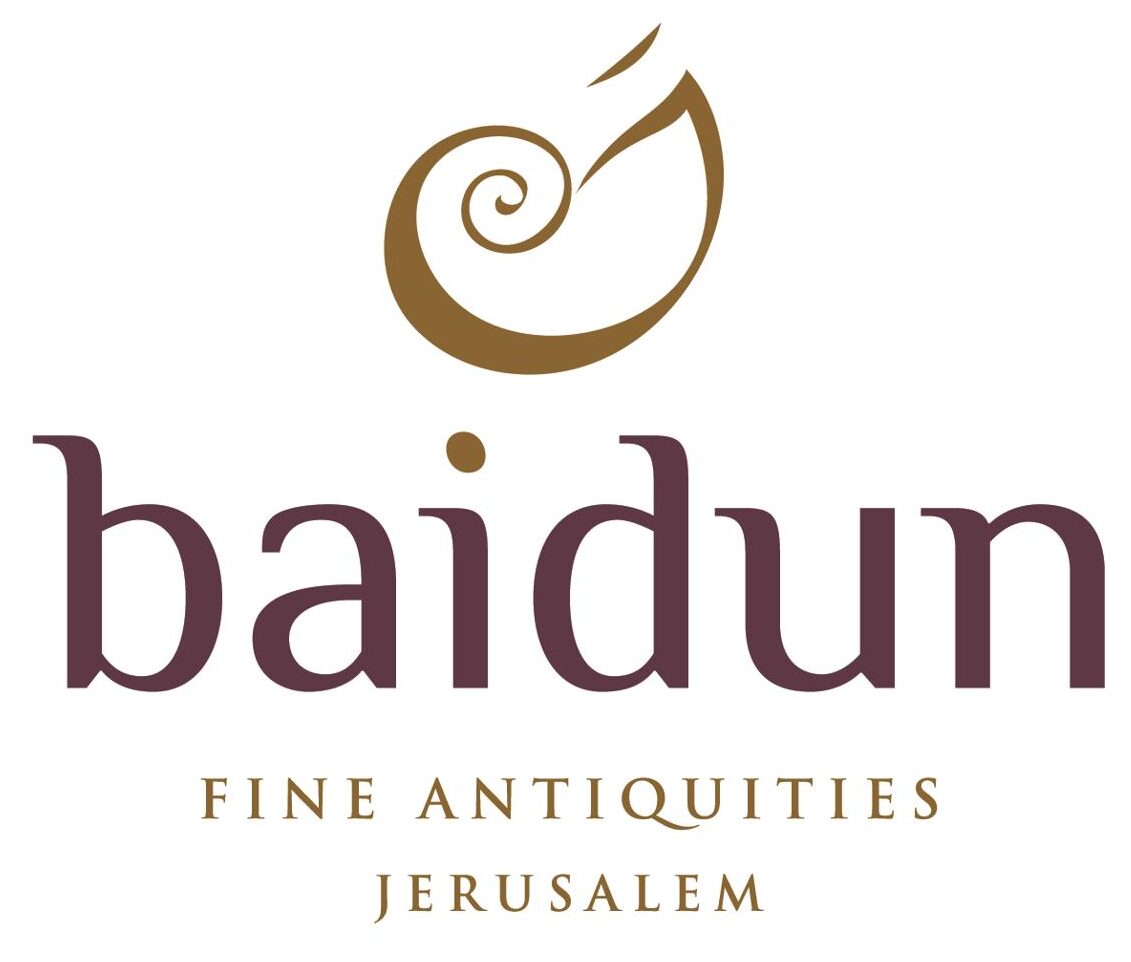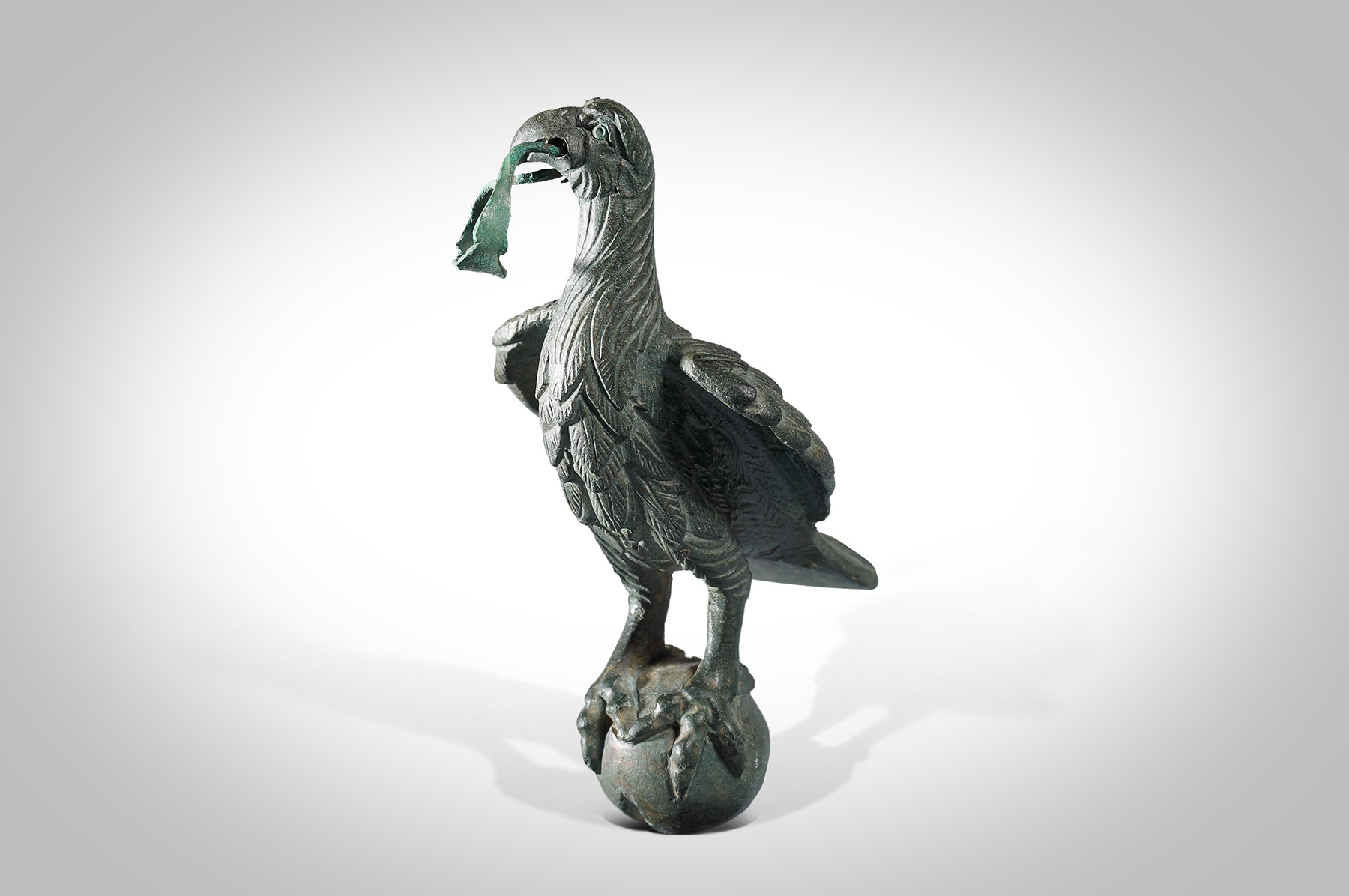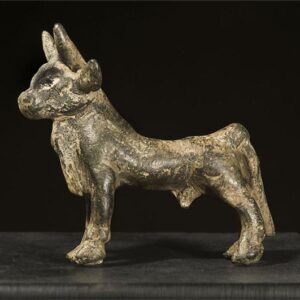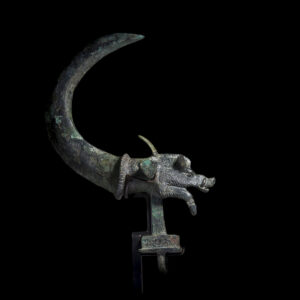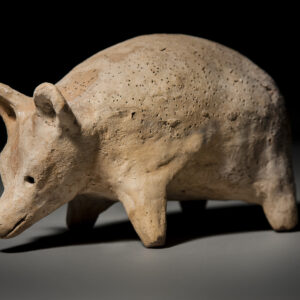Ancient Roman bronze eagle statue (statuette) of a Roman eagle holding a crown in its beak showing finely detailed metalwork by the artist in the feathers, face and talons. The wings of the metal eagle are slightly raised from its side and the legs are close together set on thick talons.
The majestic eagle, being one of the traditional Roman symbols, stands atop a bronze orb which represents the dominion of Rome over the world. A simple crown of laurels hangs from the bird’s beak in a nod to the eagle’s close association with the royalty of ancient Rome.
The eagle, was a prominent symbol used in ancient Rome, especially as the standard of a Roman legion. A Roman legionaire known as an aquilifer, or eagle-bearer, was the standard bearer who carried this standard on Roman military conquests. Each Roman legion carried one eagle. The eagle was extremely important to the Roman army, beyond merely being a symbol of a legion. A lost standard was considered an extremely grave occurrence, and the Roman military often went to great lengths to both protect a standard and to recover it if lost.
For example, see the aftermath of the Battle of the Teutoburg Forest, where the Roman army spent decades attempting to recover the lost standards of three Roman legions. That’s why they are relatively small size, since a standard bearer in circumstances of danger will wrench the eagle from its staff and conceal it in the folds of his girdle.



